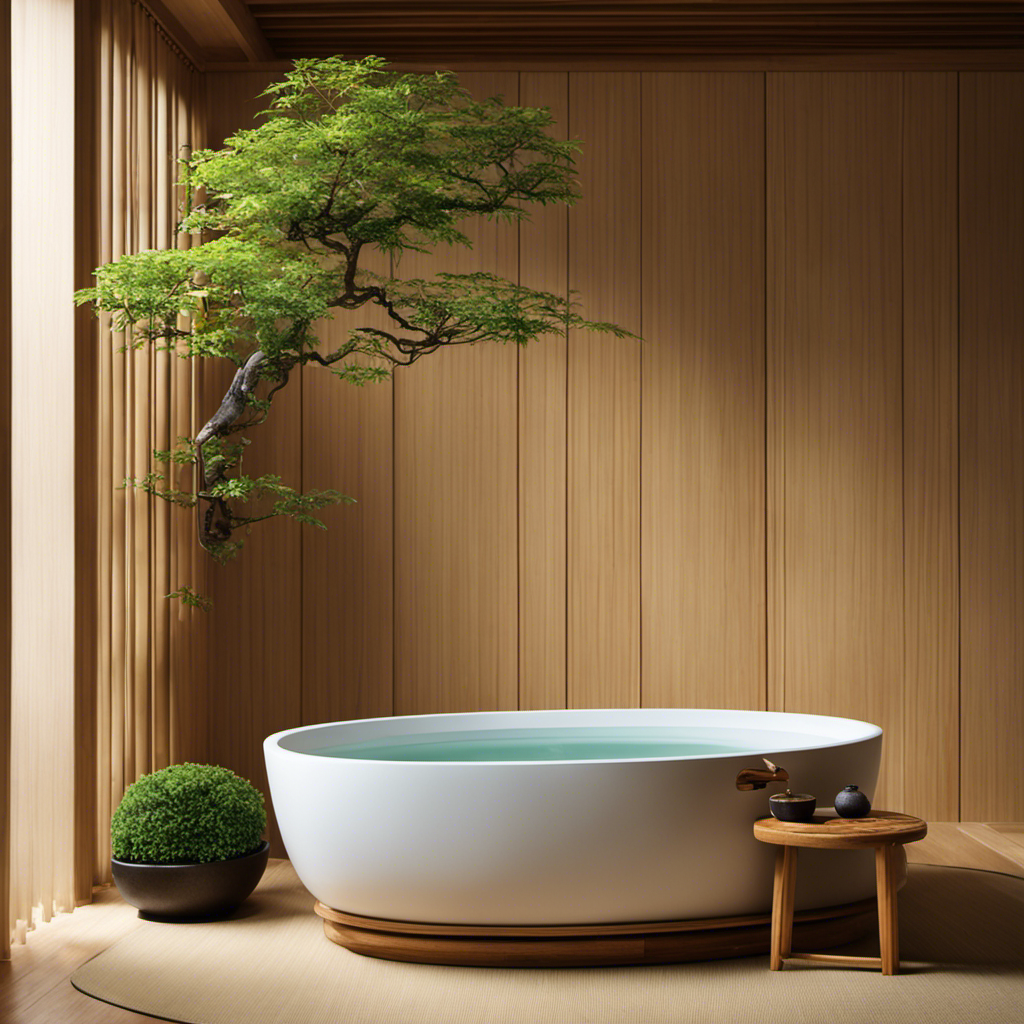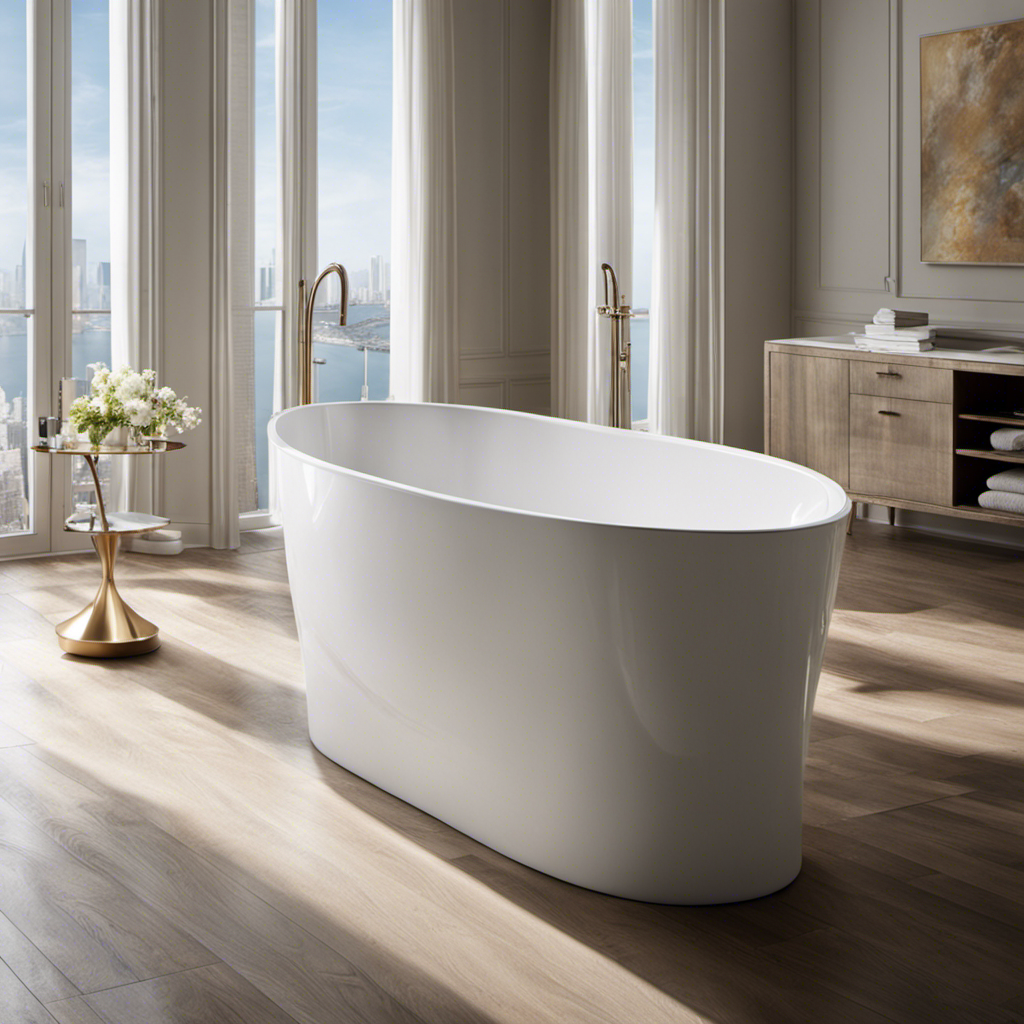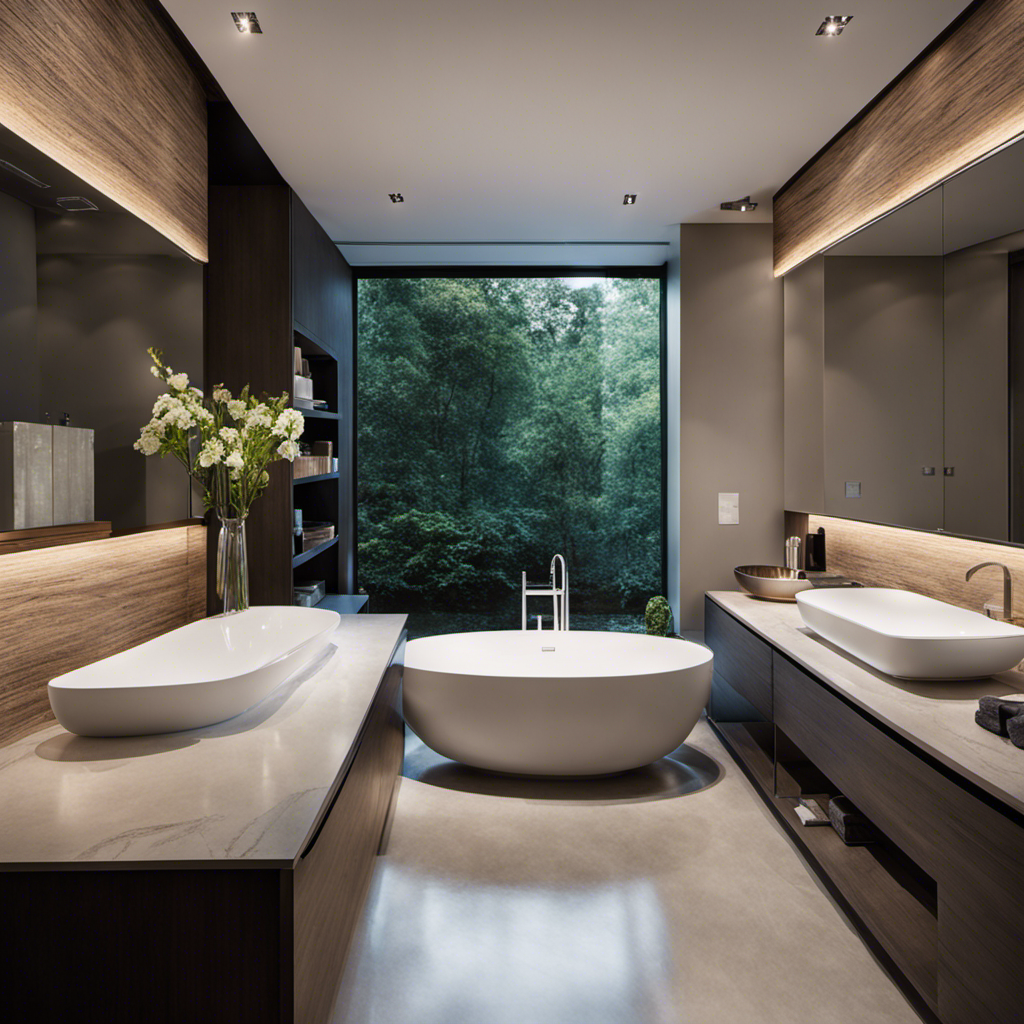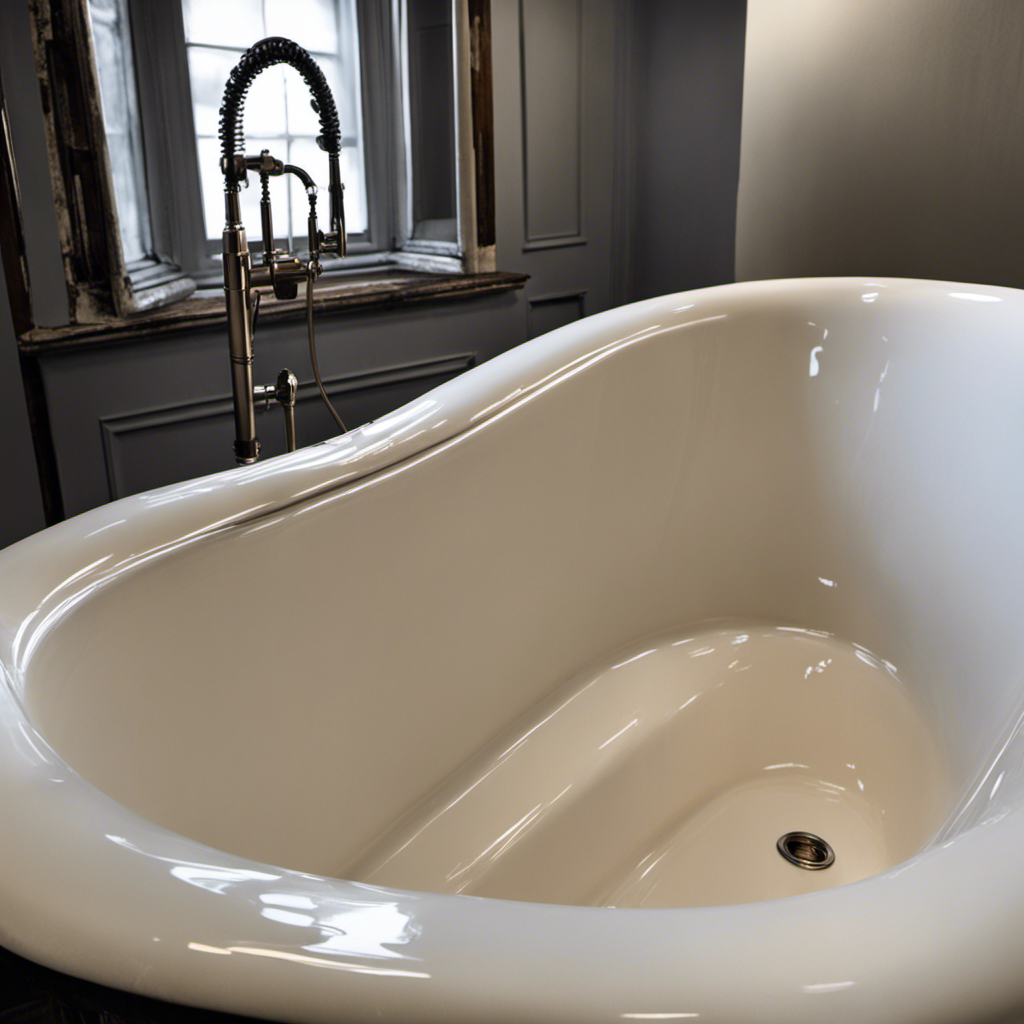Have you ever wondered what makes a Japanese bathtub so unique?
Well, let me take you on a journey to explore the origins, cultural significance, and benefits of using a Japanese bathtub.
From their traditional designs that embody tranquility and simplicity to the modern innovations that enhance comfort and relaxation, Japanese bathtubs offer a truly rejuvenating experience.
Join me as we delve into the world of these remarkable bathing sanctuaries and discover the secrets behind their popularity.
Key Takeaways
- Japanese bathtubs have a long history and hold a special place in Japanese culture, with bathing seen as a sacred practice for relaxation and rejuvenation.
- Traditional Japanese bathtubs are beautifully crafted from natural materials like hinoki wood, with a distinct design that allows for a more immersive bathing experience.
- Using a Japanese bathtub can have numerous health benefits, including improved circulation, stress relief, and detoxification.
- Proper care is essential to maintain the longevity and enjoyment of a Japanese bathtub, including avoiding abrasive cleaners, using gentle cleaning solutions, and regularly rinsing and drying the tub.
Origins and Cultural Significance
Did you know that the origins and cultural significance of Japanese bathtubs are fascinating?
Japanese bathtubs have a long history and hold a special place in Japanese culture. The rituals and customs associated with these bathtubs are deeply ingrained in the daily lives of the Japanese people.
Bathing is seen as a sacred practice, not just for cleanliness, but also for relaxation and rejuvenation. The Japanese believe that soaking in a hot bath helps to purify both the body and the soul.
This symbolism and spiritual belief connected to the Japanese bathtubs is reflected in the design and construction of these tubs. They are often made from natural materials like wood and are designed to create a serene and harmonious ambiance.
The Japanese bathtub is not just a functional object, but a symbol of cultural heritage and traditional values.
Traditional Japanese Bathtub Designs
You’ll love the unique and serene designs of traditional Japanese bathtubs. These bathtubs are not only functional but also beautifully crafted, reflecting the rich cultural heritage of Japan. Japanese bathtub materials vary but are often made from natural materials such as hinoki wood, which is known for its aromatic scent and antibacterial properties. The size and shape of these bathtubs are also distinct, with a deeper and narrower design compared to Western-style tubs. This allows for a more immersive bathing experience, as the bather can sit comfortably in an upright position while soaking in the hot water. The table below provides a visual representation of the different sizes and shapes commonly found in traditional Japanese bathtubs.
| Shape | Size (inches) |
|---|---|
| Rectangle | 60×30 |
| Round | 42 diameter |
| Square | 48×48 |
Transitioning into the subsequent section, the benefits of using a Japanese bathtub extend beyond its design and aesthetics.
Benefits of Using a Japanese Bathtub
Using a traditional Japanese bathtub can provide numerous benefits for relaxation and overall well-being. Here are three reasons why you should consider incorporating a Japanese bathtub into your self-care routine:
-
Improved circulation: The deep soaking experience in a Japanese bathtub promotes blood flow and helps to relax tense muscles. This increased circulation can have a positive impact on your overall health and vitality.
-
Stress relief: The warm water and serene environment of a Japanese bathtub create the perfect setting for relaxation. Taking the time to unwind in a traditional bathtub can help reduce stress and promote mental and emotional well-being.
-
Detoxification: Japanese bathtubs are typically made from natural materials, such as wood or stone, which can help draw out toxins from the body. This detoxification process can leave you feeling refreshed and rejuvenated.
Incorporating a Japanese bathtub into your self-care routine can have numerous health benefits and relaxation techniques.
Now let’s explore how to properly care for your Japanese bathtub to ensure its longevity and continued enjoyment.
How to Care for a Japanese Bathtub
Taking proper care of your Japanese bathtub is essential to maintain its longevity and ensure continued enjoyment. When it comes to cleaning, there are a few important tips to keep in mind.
Firstly, avoid using abrasive cleaners or scrub brushes, as they can damage the delicate surface of the tub. Instead, opt for gentle cleaning solutions specifically designed for Japanese bathtubs. These products are typically mild and non-abrasive, ensuring that your tub remains in pristine condition.
Additionally, it is important to regularly rinse and dry the tub after each use to prevent the buildup of soap scum and mineral deposits.
Modern Innovations in Japanese Bathtubs
When it comes to modern innovations in Japanese bathtubs, there are several exciting features that can enhance your bathing experience. Here are three incredible advancements that have been incorporated into these traditional bathing fixtures:
-
Smart Features: Japanese bathtubs now come equipped with smart technology, allowing you to control various aspects of your bath, such as water temperature, jets, and even music or aromatherapy options, all from the comfort of your smartphone or tablet.
-
Sustainability: With a growing focus on eco-friendly living, Japanese bathtubs have also embraced sustainability. Many models now feature energy-efficient heaters, water-saving mechanisms, and even built-in filtration systems to ensure that you can enjoy a long, relaxing soak while minimizing your impact on the environment.
-
Ergonomic Design: Japanese bathtubs are renowned for their exceptional design, and modern innovations take this to the next level. With ergonomically shaped seating, built-in headrests, and adjustable water jets, these tubs provide the ultimate in comfort and relaxation.
With these exciting developments, Japanese bathtubs continue to redefine the bathing experience by combining tradition with modern technology and sustainability.
Conclusion
In conclusion, the Japanese bathtub is not just a place to cleanse oneself, but a cultural treasure that offers numerous benefits.
Its origins and cultural significance date back centuries, symbolizing purity and relaxation. The traditional designs, with their deep and compact structures, provide a truly immersive bathing experience.
Taking care of these bathtubs ensures their longevity and preserves their beauty. Furthermore, modern innovations have brought added convenience and functionality to the Japanese bathtub, making it even more appealing.
Embracing this traditional practice is not only a way to unwind but also a way to honor Japanese heritage.










